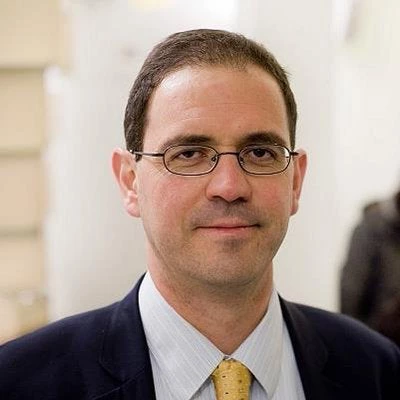 A car parked on a sidewalk. (Photo: Arturo Ardila-Gomez/World Bank)
A car parked on a sidewalk. (Photo: Arturo Ardila-Gomez/World Bank)
Read the report: Planning for Transit-Oriented Development in Emerging Cities
Is parking a necessity for commerce, or does it hinder the very dynamics that help cities thrive?
The hidden costs of parking
At first glance, parking seems essential. However, providing lots of parking in urban areas comes with hidden costs. Parking spaces are expensive to build and maintain and divert funds away from more efficient modes of transport, such as public transit. In dense urban areas where land is scarce, dedicating space to parking can be a missed opportunity for more productive uses, such as parks, homes, or businesses. In short, building too much parking can do more harm than good.
Additionally, too much parking encourages car dependency, which leads to congestion, longer commutes, and higher pollution levels. For developing countries, many of which already face transportation challenges, a car-centric approach can worsen urban sprawl.
Smart parking strategies: Transforming cities
Rather than expanding parking to accommodate rising car ownership, cities can implement smart parking strategies to manage their land use better, discourage the overuse of cars, and encourage alternatives –such as public transport, walking car overuse, and encourage alternatives, such as public transport, walking, or cycling.
The main objective of a parking policy is to generate economic activity. People who shop or eat in restaurants typically park for one or two hours. Women drivers do more linked trips, so they park for short periods, sometimes less than one hour. The parking policy should generate rotation among cars parked, disincentivizing long-term parking, which takes place during the morning and evening peak hours.
Charging for parking is, therefore, crucial to balancing the competition between private cars and public transport. Free parking on streets or sidewalks unfairly subsidizes driving and often comes at the expense of pedestrians, who may face hazardous conditions due to illegally parked cars. Sidewalks should be reserved for people, not vehicles. The pricing should also be lower for short stays and higher for more extended stays to promote rotation and economic activity.
A related objective is to promote public transport use, particularly during peak hours. This objective has a physical implication because a sound parking policy should promote walking. Another aim was to save scarce resources, such as lanes on an urban road or space in residential units, to make housing more affordable. This objective is related to housing affordability.
To achieve these objectives, abandoning minimum parking requirements is essential. Minimum parking requirements are arbitrary and lack a solid scientific basis, demanding too much parking. Many U.S., Canada, and Mexico cities have started eliminating these requirements and are seeing positive results, such as more space for housing, local businesses, and public spaces.
Finally, a parking policy will manage parking in the area or city, provide adequate supply, and promote public transport. The private sector will respond by building proper parking plots and charging to make a profit. If the city allows parking on some streets, it should extract revenue from the road space devoted to parking and built with public funds.
The 15-minute city: Reducing the need for cars
The 15-minute city concept supports walkable, mixed-use neighborhoods where essential services—like shops, schools, and healthcare—are accessible within a 15-minute walk or bike ride. Reducing the need for cars means fewer parking spaces are necessary, and streets become safer, greener, and more human-centered.
This model benefits developing countries by reducing congestion and making neighborhoods more self-sufficient. Paired with land-use regulations that promote TOD, a smart parking policy shifts focus away from car-centric design, improving public spaces and fostering stronger local economies.
Transit-oriented development: A better vision for cities
The 15-minute city is possible thanks to high-density, mixed-use, walkable neighborhoods that allow people to walk to shops, restaurants, schools, parks, and health facilities. This pattern also supports public transport, allowing people to access jobs in all city areas and making the labor market work efficiently for firms and employees. The World Bank has found that cities adopting TOD see less traffic congestion, cleaner air, and more vibrant economies.
In my latest report, I created a simulation to test this thinking and understand how different land use rules affect public ridership. The model shows that public transport ridership increases when regulations allow denser urban growth, thanks to buildings covering more of a plot of land and higher floor area ratios (FAR). Shorter setbacks also promote walking and increase density.
Further, the model suggests that reducing or removing minimum parking requirements can increase the housing supply, make homes more affordable, and bring the benefits of increased public transportation usage.
Parking less, living more
Reducing parking isn’t just about easing traffic but building better cities. By implementing smart parking policies, eliminating parking minimums, and adopting land use regulations aligned with TOD principles, developing countries can create more livable, dynamic, and equitable cities where people walk to most destinations and use public transport for the rest. Charging for parking, integrating public transport, and rethinking the design of urban spaces can all make a substantial difference.
For cities looking to reduce congestion and promote local economies, fewer parking lots and more focus on public spaces are the way forward.



Join the Conversation